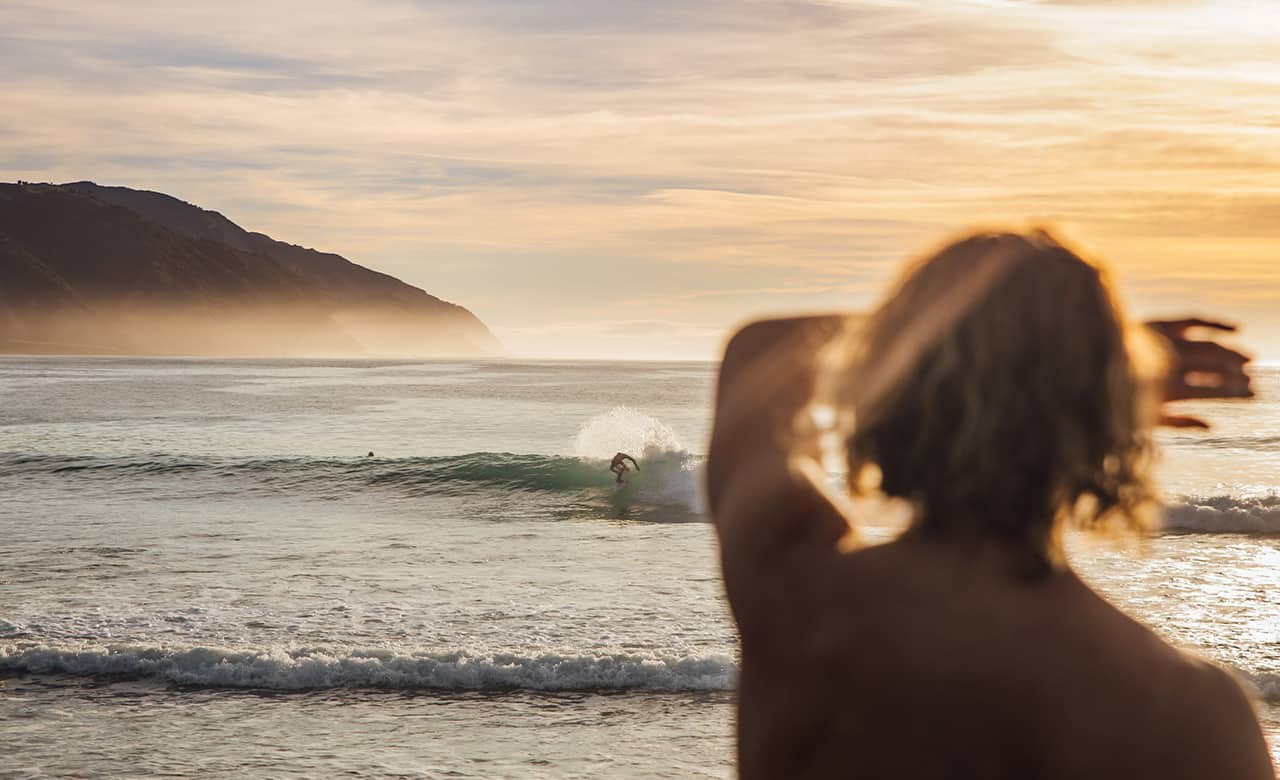The Best Sunscreen For You
and For The Ocean

Contents
Over the years, surfers have become more aware of the sun’s dangers and the science behind sunscreens. We still don’t do enough, though, and people get lazy or lackadaisical when applying sunscreen on hot and sunny days.
There are many different versions of sunscreen. There is a cream, a spray, a lip balm, a gel, and zinc sunscreen. Over the years, it was discovered that sunscreen damages coral reefs, which has led to the development of reef-friendly sunscreen and organic, biodegradable sunscreen.
We will examine several coral reef safe sunscreen options and other eco-friendly sunscreen options.
Clothing as practical protection
Sunscreen is one method of protection, but there are other more practical options. Some people always surf in a hat, and others are covered in lycra vests and pants. Many people surf in long-sleeved tee-shirts or wetsuit tops. These are all practical solutions as surf sun protection that works alongside surf sunblock.
Even if the water is warm, some people use super thin 1mm and 2mm wetsuits, to keep the sun off. Full suits or short-armed suits both help to keep the sun off the sensitive parts of your body.
Some sunglasses are designed to be worn while surfing, preventing sunburn of the eyes, or Arc Eye, as it is commonly known.
Sun protection during surf sessions
There are also ways of carrying sunscreen with you when you go surfing. Some people have wrist straps with little sunscreen pods on them. Others just take the sunscreen with them in their boardshorts pocket or in the key pouch of their wetsuits. If you’re going to surf for a long time, it is a good idea to take some sunscreen with you whenever you paddle out.
Choosing the best sunscreen for surfing
When it comes to the best surf sunscreen, there are now many options out there. The best sunscreen for surfing also depends on what your needs are. If you are the sort of hard-core surfer that spends 8 hours at a time surfing some remote Indonesian reef, then you are going to need some tough, zinc sunscreen. Seen as you’re surfing over reefs, you definitely want to make good choices regarding eco-friendly sunscreen.
If you’re the type of surfer who goes for a quick half-hour paddle at the local beach break, then your surf sunblock requirements are a bit different. A quick wipe of a balm and something on your lips could suffice.
Suppose you’re that surfer who surfs almost every single day for a few hours. In that case, your sunscreen needs are very different. You will continuously be wiping sunscreen off and possibly wiping off your body’s natural sun repellant as well. For very regular use, your surf sun protection must contain some sort of moisturizer as well.
Finally, if you’re a different type of ocean user – a fisherman, a diver, or an open water swimmer – your requirements are also very different. It depends on how much contact you have with the water. Contact with the water is the one factor that eventually sees the sunscreen wearing off and is the main reason people need to reapply sunscreen.
Bio-degradable Sunscreen
In these days of eco-awareness, it is right to look for a coral safe sunscreen. A simple surf sunscreen stick can contain oxybenzone and octinoxate, both of which absorb harmful UV rays and lead to coral bleaching.
Preservatives such as methylparaben and phenoxyethanol are also toxic to the ocean. They are found in many sunscreens and should be avoided.
Best reef-safe
sunscreen brands
Top 10 Sunscreens for surfing
- CeraVe – Mineral Sunscreen Stick
- MANDA – Organic sun paste
- Thinksport – Safe Sunscreen SPF 50+
- SETT – SPF 20 Lip Balm
- Bare Republic – Mineral SPF 50 Neon Sunscreen Stick 3-Pack
- All Good – Tinted Sunscreen Combo Pack
- All Good – Mineral Sunstick SPF 30 – 2 Pack
- Seventy One Procent – The original
- SurfYogis – 100% Natural Reef-Safe Surfscreen Zinc
- SurfYogis – 100% Natural Reef-Safe Surfscreen Cold Climate Formula
Taking care of your skin
Then there is much that you can do after a surf to prevent sunburn and to stay healthy. The two most important are the most obvious, and they are to keep hydrated and use a moisturizer on your skin.
Just a basic aqueous cream would be fine, but if you’ve been in the sun, then you need to lay it on and work it into the system. The combination of being hydrated and keeping skin moisturized are the two most significant elements of fighting sunburn and looking after your skin after a big day in the sun.
After-sun
There are many after-sun treatments, and they are mostly moisturizing creams with organic additives like cucumber and aloe vera oil. They are always good because they quickly take away sunburn, and they ease any pain from a burn.
Make it a priority
As we deal with climate changes and the hottest days ever from time to time, it is crucial to get a good sunscreen regime. This includes activities on land and the liberal use of sunscreen for surfing. It is hard to pinpoint the best sunscreen for surfing, but the best surf sunscreen is simply the one you have in your hand or in your bag.
These days, many people won’t even think of surfing without surf sunblock, who won’t paddle out unless they are lathered up with surf sunscreen or zinc. This is the right approach. It’s just not worth missing out on the next big swell, because you suffer from sunburn and not to mention the risk of skin cancer.
So figure out what your favourite is, and buy a couple of tubes. Always have some in your car and some in your surf bag, and you’ll be good to go.